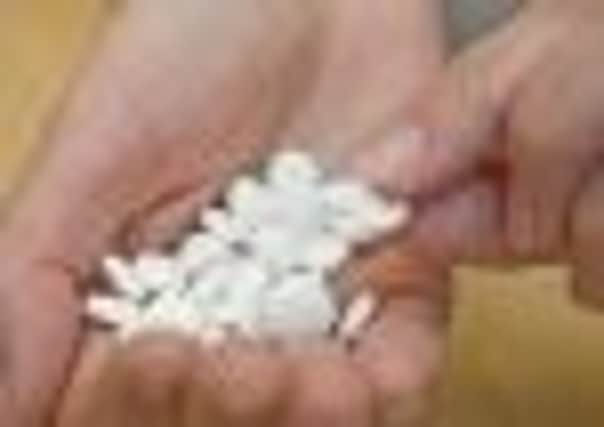Web fuels drug victim rise


Admissions in the Lothians have risen steadily since 2005, with a 20 per cent rise in 2011, up to 999 compared with 828 the previous year.
Admissions for heroin and other opioids accounted for the largest proportion of the rise, with 65 more admissions in 2011 than the previous year – taking the total to 660.
Advertisement
Hide AdAdvertisement
Hide AdEmergency admissions accounted for 928 of the 999 inpatient drug cases last year, according to the new statistics from Information Services Division Scotland.
The number taken to hospital after taking stimulants such as mephedrone was 175 per cent higher in 2011 than 2010.
Experts today said the ease of ordering such drugs online and huge variations in strengths was linked to the increase in overdoses. The practice of drinking heavily while taking legal highs has also become common and is extremely dangerous, they added.
Mephedrone was banned in 2010 after being linked to a number of deaths in the UK but numerous other similar drugs remain widely available online.
Advertisement
Hide AdAdvertisement
Hide AdEmma Crawshaw, service delivery manager at the Edinburgh drug support charity Crew 2000, said: “The rise of the internet has given way to new drugs becoming available and we’ve seen that reflected in requests for help at Crew.
“With mephedrone, there can be a desire to re-dose and we’ve heard stories about people using mephedrone at home rather than out partying, when there’s nothing else to distract them, and unfortunately their use was escalating.”
Dr Angus Bancroft, senior lecturer in social and political science at Edinburgh University, and author of Drugs, Intoxication and Society, said demand for stimulants and legal highs had increased among young people.
At 88 hospital admissions last year, the Lothians had the highest level of misuse of stimulants in Scotland along with 85 for suffering from overdosing on sedatives such as valium.
Advertisement
Hide AdAdvertisement
Hide AdNationally, the ISD Scotland report found a 64 per cent national increase in drug users in the 35-39 age group, in just five years, which David Liddell, director of Scottish Drugs Forum, described as “disturbing”.
The rise is linked to long-term use from a “heroin population” which has grown up using the drug. The number of admissions is linked to the health implications that causes, along with the danger of taking both heroin and methadone.
Mr Liddell said: “This is consistent with what we know about our ageing population of heroin users who have been using for many years – some for over 20 years – and who have developed major health problems as a result.
“These statistics underline the pressing need for action to help our growing numbers of older drug users in Scotland.”
Advertisement
Hide AdAdvertisement
Hide AdJim Sherval, public health specialist at NHS Lothian, said: “There are many factors behind changes in these figures, and they are not a very accurate guide to drug trends.
“NHS Lothian uses a number of approaches to help people to address their drug use and end dependency on drugs.”
BACKGROUND
LEGAL highs have been on the rise for some years, but the big peak was when mephedrone surfaced a few years ago. There was a brief period when it was big and still legal, and we saw a huge rise in people buying it over the internet.
Mephedrone is illegal now but the popularity is still there. The use of cannabis has declined while the use of these drugs has been on the rise.
Advertisement
Hide AdAdvertisement
Hide AdOxy, a version of ketamine, has popped up recently and has become popular. Indeed, one of the risks is the market changes so quickly that they don’t know how much to take.
Another risk is that young people and students out dancing take these substances over the course of a long night and they may well be drinking heavily, which is an added danger.
The trend towards mephedrone was driven by a big fall in the purity of Ecstasy, but all of these drugs are of unreliable quality. People turn from one to the other without having an idea of what they are buying and that may well be reflected in admissions to hospital.